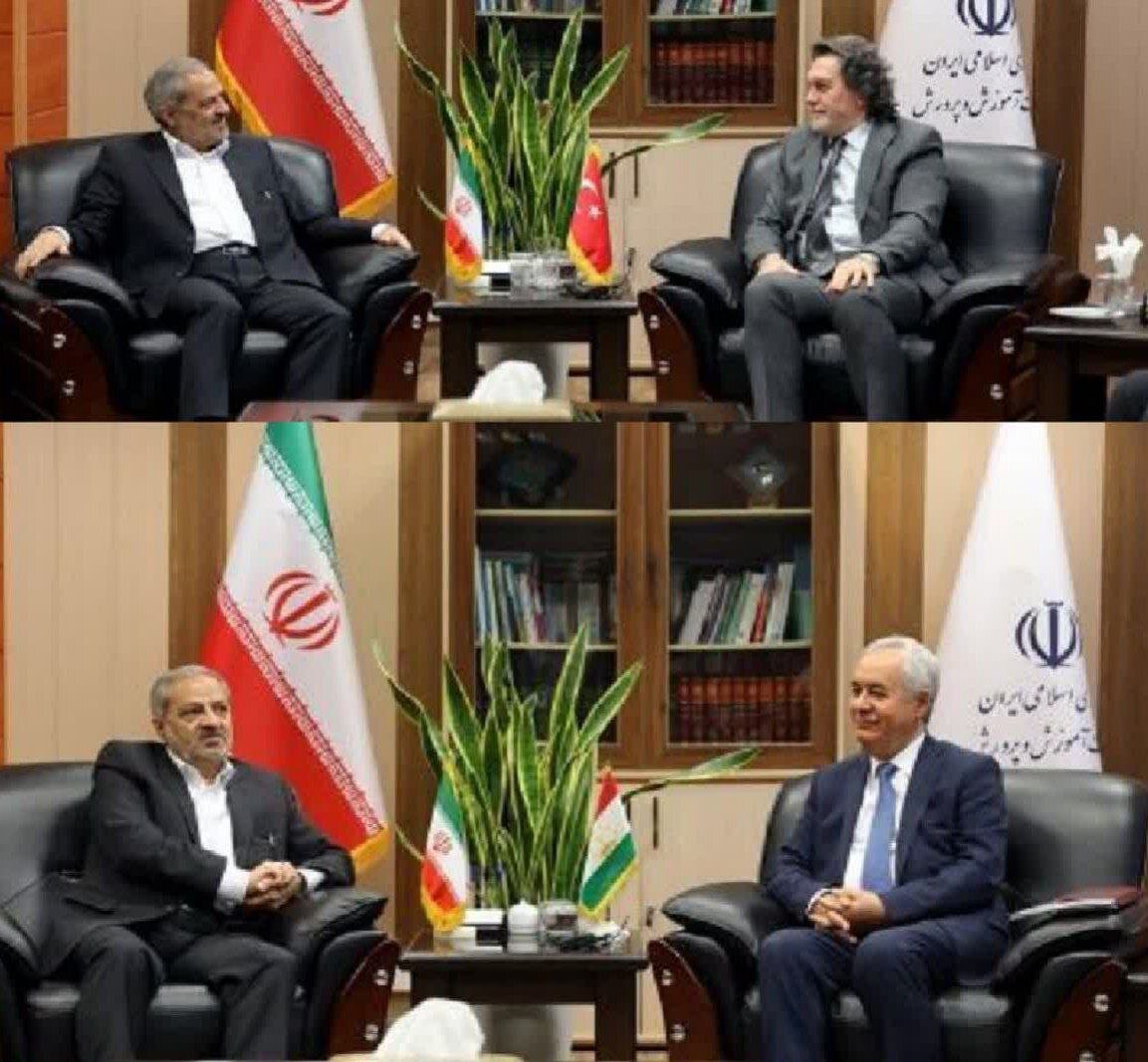TEHRAN –Holding separate sessions with ambassadors of Turkey and Tajikistan to Tehran on Sunday, Education Minister Alireza Kazemi explored avenues to expand educational cooperation between Iran and the two other countries.
Highlighting the close relationships between Turkey and Iran, Turkish envoy, Hicabi Kirlangiç, said “It is our main responsibility to facilitate the relationships between the two countries,” IRNA reported.
The two officials further discussed ways to boost ties in the field of education, as well as address the challenges faced by the Iranian teachers and students in Turkey and vice-versa.
Kazemi, for his part, stressed adhering to the formerly signed memorandums of understanding.
Tajik ambassador to Tehran, Nizamuddin Zahedi, also met Kazemi, underscoring the fact that the two countries share the same history, culture, religion, and even language.
Referring to Rudaki school, which is being built jointly in Tajikistan, Zahedi asked Kazemi to address the challenges that are faced in three parts including ownership, contents of textbooks, and management to be able to establish and inaugurate the school.
The education minister, for his part, proposed establishing a joint committee to deal with the raised issues by reaching agreements and fostering collaborations.
Key educational achievements
According to the latest statistics, education space per student in Iran has increased from 5.17 square meters in the calendar year 1396 (2017-2018) to 5.28 square meters in the year 1402 (2023 – 2024).
The literacy rate, as well, has increased from 87.9 percent in 1396 to 90.7 percent in 1402, IRNA reported.
In the mentioned six-year period, the ratio of resilient classrooms improved from 0.64 to 0.82, sport space per student grew from 0.17 to 0.20, and the ratio of classrooms equipped with cooling and heating systems rose from 0.48 to 0.68.
The literacy rate has improved in urban areas as well as rural areas. From 1396 to 1402, the literacy rate among men and women amounted to 93.9 percent and 87.4 percent, respectively.
The literacy rate in urban areas was announced to be 92.8 percent, males had a literacy of 95.4 percent and females had a literacy rate of 90.2 percent.
In rural areas, the literacy rate reached 83.5 percent. Men accounted for 88.8 percent and women for 78.3 percent of the figure.
Moreover, the number of out-of-school students in primary, secondary, and high school lowered from 2.17, 6.71, and 18.19 percent in 1396 to 2.10, 5.23, and 16.12 percent in 1402, respectively.
Literacy growth rate in Iran 2.5 times the world average
In the past four decades, the growth of literacy in the world has been about 18 percent, while in the same period, this figure in Iran has been 50 percent, IRNA reported.
Nearly one year after the 1979 Islamic Revolution, the Literacy Movement Organization was established by the order of Imam Khomeini with the aim of eradicating illiteracy.
At that time more than half of Iran’s population, over the age of six, was illiterate. Now, Iran is on the verge of removing illiteracy.


No comments:
Post a Comment